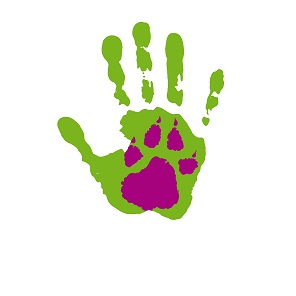Leave it. A puppy who understands this has the foundation for good manners and reliable control. Every puppy obedience task is built on the leave it command. To heel well a puppy needs to learn not to pull towards things it is interested in. A long, reliable, stay cannot be accomplished unless the puppy understands the leave it command. Teaching the leave it command without using punishment is vital to building a trust relationship with… Continue
Read More
There are several ways to teach heeling. Before choosing the right one for you it is important to define your objectives. Obedience Competition, Rally Obedience, Schutzhund and IPO Walking and control in public, especially in crowds Control when visiting, going to the vets, or walking to and from the car. Each of these methods require a different style of heeling. Looking to owner for cues. Happy demeanor. Fully following the owner’s lead. While this… Continue
Read More
http://www.sinisterlabs.biz/CKC_Rally_20150101.php These are the CKC Rally Signs. Rally is open to purebred dogs, and any dog which applies for a number from the CKC. You can compete if you do not have a number, but you must pay a listing fee, and there will be no way to track your legs, or wins. Pointer #1 – your dog will need to look away to ease its mind and reduce stress. The more you work with… Continue
Read More
The Proper Way to Use Food as a Training Tool There are many misconceptions associated with using food as the reward. When used right food is a strong motivator. Food is not a replacement for relationship Food is not a replacement for play You must work to wean your dog off food. (Would you work for no paycheck?) Food is not a substitute for training and practice Food is not a replacement for spending time… Continue
Read More
Socialization is one of the most misunderstood aspects of dog training. Almost everyone knows puppies need to be exposed to as many situations as possible so they will grow up to be confident, well behaved dogs. Wrong This is possibly one of the main reasons why the number of reactive dogs in urban centers is high. It is also possibly one of the main reasons why small dogs are most likely to drop out of… Continue
Read More
A Walk A Day Keeps Problems Away – There is a lot of truth in this. Does your dog have behavioral problems? Can You fix them? The truth is no. Dogs are living animals who have emotional responses to stress – like humans. You cannot promise that ‘any dog’ will never react. What you can do is ‘stack the deck’ in your favor and teach a dog coping skills so that it can manage stress…. Continue
Read More
The term reactive dog is a recent term in the dog world. Older terms included nervous, fearful, aggressive, leash aggression, or dog aggressive. Reactive dogs were ‘washed out’ of training programs, and very often were rehomed, or worse. Trainers didn’t understand the problem, and were unable to create a solution. Positive reinforcement trainers are making strong progress creating solutions for reactive problems, but there is still room for improvement. Some positive trends fail to address… Continue
Read More
The crib note series are designed to help you understand the basic terms and offer explanations designed to help dog owners understand the theories and practices behind positive dog training. Hopefully these quick reference words will help explain some of the more indepth information available to pet owners and novice sport dog trainers. It is important to understand that everything you do reinforces a dog’s behavior, good or bad. Even when you are watching TV, and ignoring… Continue
Read More
These are some brief crib notes that might help you understand some of the terminology used by today’s sport dog trainers. Dogs are motivated by the desire to acquire something. This can be used to train a dog. Classical conditioning works with your dog’s natural behavior to create responses that generates a specific behavior from a dog. This is an involuntary reaction. If a dog sees a competition ring, or rally signs, and has always… Continue
Read More
Engagement is a big part of both sport dog training and behavior modification. I’m currently training a mobility service dog. She picked up everything quickly at 6 months old and was already doing public access work in a mall. Three months later she wants to play and is trying to start a battle of wills. Understand Your Dog’s Motives The first thing to realize is that she is not being stubborn, or trying to dominate… Continue
Read More




